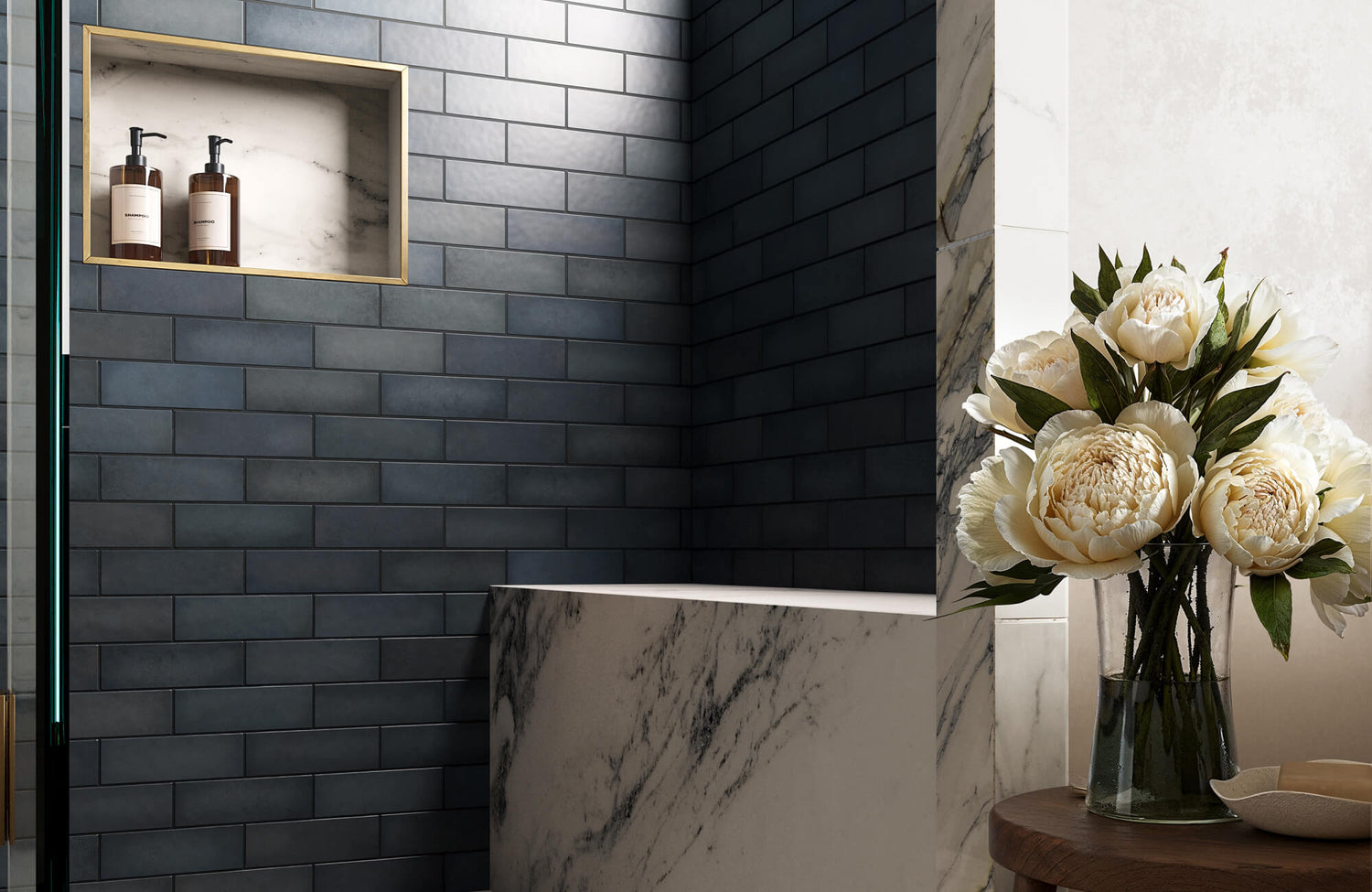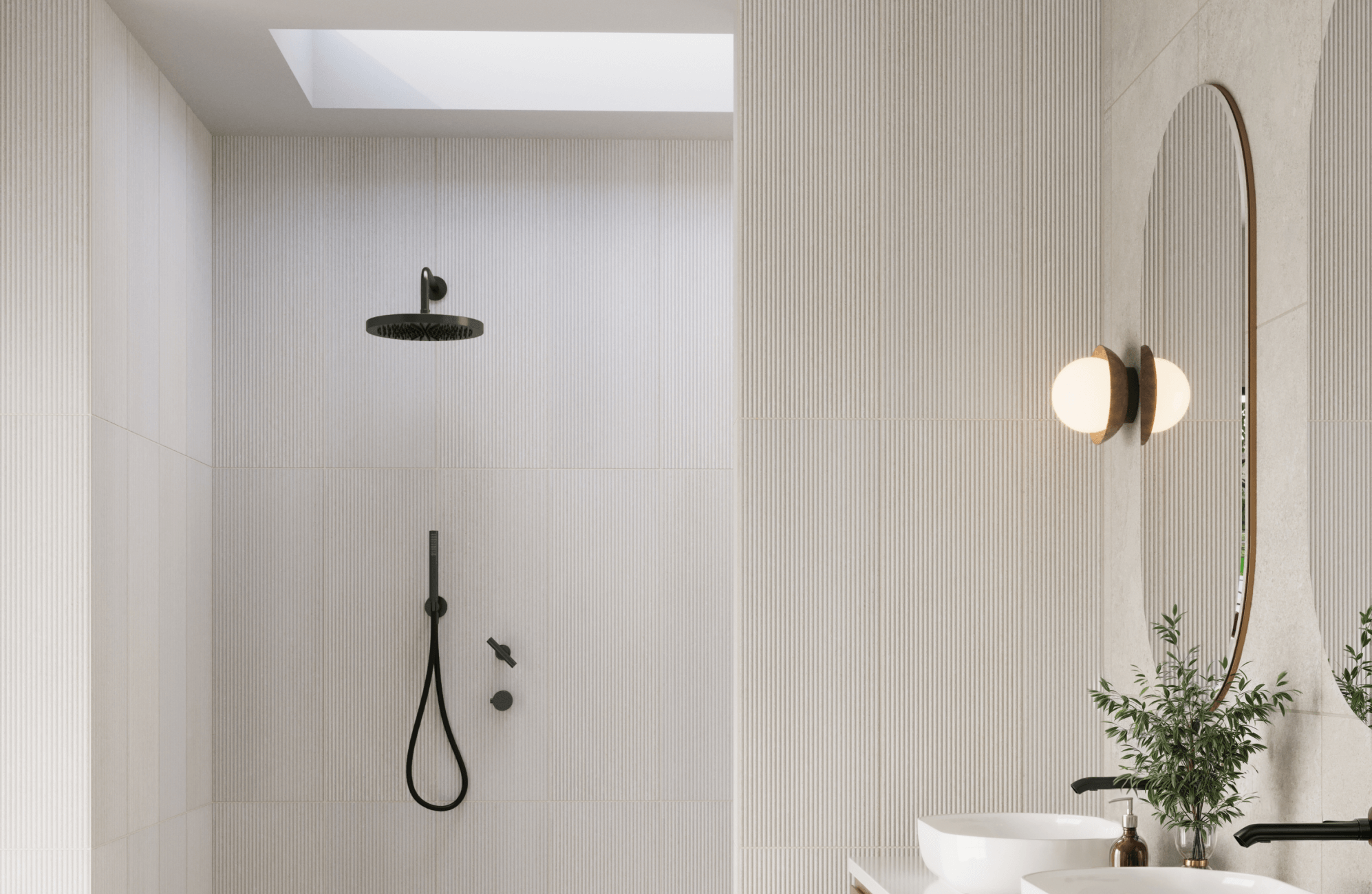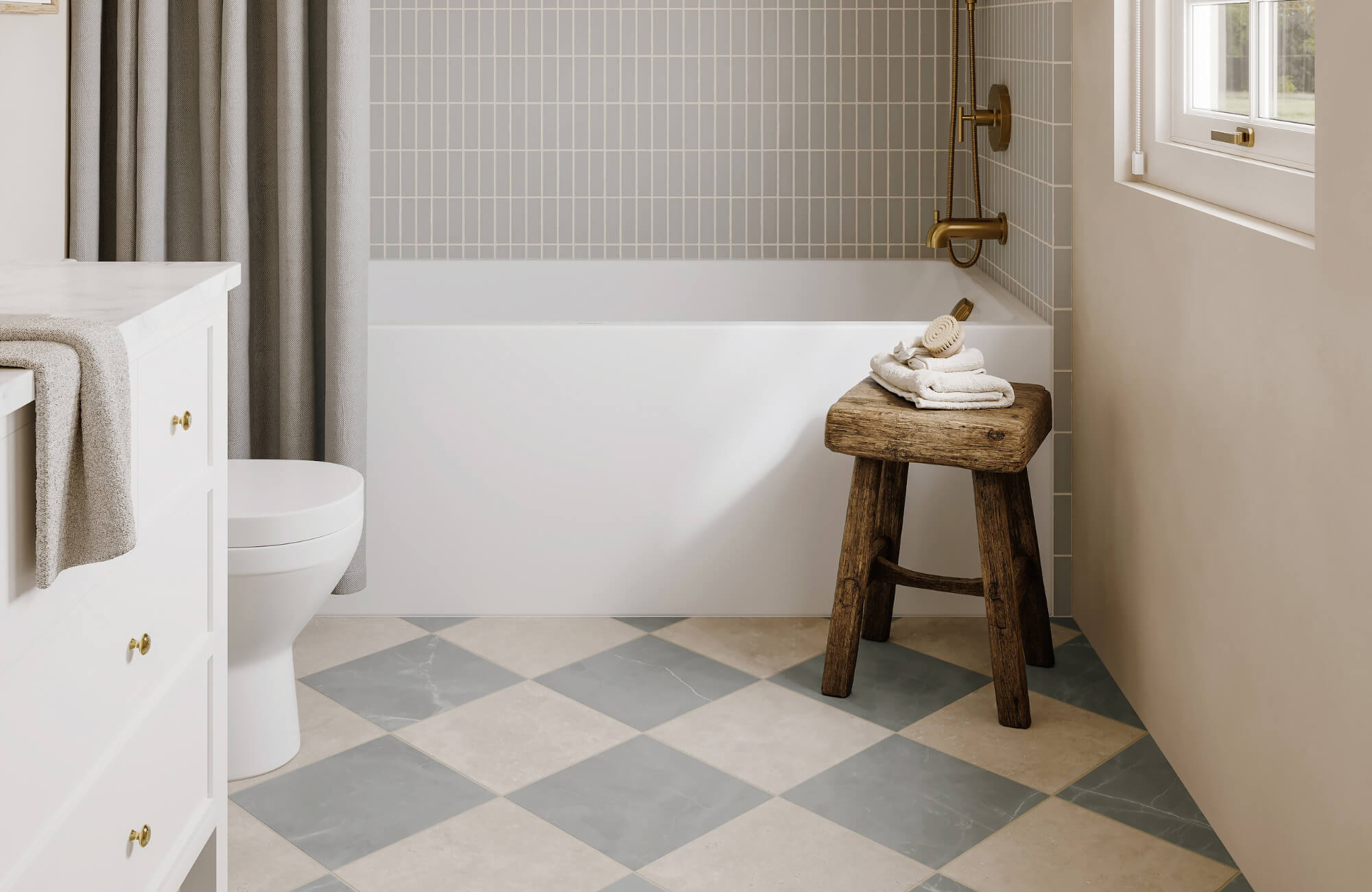Subway tiles have long been a cornerstone of interior design, offering a perfect blend of timeless style and modern versatility. Their simple rectangular form, clean lines, and adaptability make them an ideal choice for kitchens, bathrooms, and beyond. Whether arranged in a classic brick pattern or a bold herringbone layout, subway tiles bring depth, character, and elegance to any space. Available in a wide range of colors, finishes, and materials, they also allow for endless customization, making it easy to enhance any room while maintaining durability and effortless upkeep.
Brief History of Subway Tiles
Subway tiles trace their origins to the early 1900s when architects George C. Heins and Christopher Grant La Farge introduced them for the walls of New York City's subway stations. Designed for both durability and hygiene, these tiles featured a smooth, glossy surface that reflected light, making underground stations feel brighter and more inviting. Their non-porous finish also made cleaning easier, which was crucial for maintaining a sanitary public transit system.
Beyond their practical benefits, subway tiles quickly gained recognition for their aesthetic appeal. Their crisp, rectangular form aligned with the emerging Art Deco and early modernist movements, making them appear in public buildings, hospitals, and later, private homes. Over time, they became synonymous with cleanliness and sophistication, influencing mid-century modern interiors.
As design trends evolved, subway tiles transcended their utilitarian roots. The classic white, glossy tiles remained a staple, but designers began experimenting with new colors, finishes, and layouts. For example, matte, textured, and handcrafted variations emerged, expanding their versatility. Today, subway tiles continue to be a design favorite, seamlessly blending nostalgia with contemporary innovation. Whether used in traditional spaces or cutting-edge interiors, their enduring charm and adaptability keep them relevant across generations.

Design Principles with Subway Tiles
Subway tiles offer a versatile range of design possibilities through diverse colors, finishes, and layout patterns. From classic whites to vibrant hues and various patterns like herringbone and stack bond, these tiles can dramatically influence the mood and style of any space.
Color Choices
The color of subway tiles plays a key role in defining a room’s atmosphere. Classic white remains a favorite for its timeless elegance and ability to brighten and visually expand smaller spaces, seamlessly fitting both traditional and modern designs. On the other hand, darker shades, like black, add striking contrast and a sense of sophistication, perfect for making a bold statement in kitchens or bathrooms. Soft pastels, such as mint green and blush pink, create a calming ambiance, making them ideal for bathrooms and bedrooms. For a more vibrant touch, bold shades like cobalt blue and emerald green bring personality and energy, turning accent walls or feature areas into standout elements.
Deep blue tones, such as the Ellie 2.5x8 Matte Ceramic Tile in Denim, as displayed in the picture above, offer a perfect balance between boldness and versatility. This rich, muted blue complements both modern and rustic interiors, adding depth without overwhelming the space. Whether used as a backsplash in a kitchen or as an accent in a bathroom, its matte finish enhances the design with a refined yet understated elegance.
Finish Choices
Different finishes enhance both the style and functionality of subway tiles. Glossy finishes, for instance, reflect light, brightening rooms and creating a clean, polished look, particularly in small or dim spaces like hallways or kitchens. They also resist fingerprints and smudges, making upkeep easier. Matte finishes, on the other hand, offer a soft, muted aesthetic by absorbing light, making them ideal for contemporary spaces and busy areas where durability and low maintenance matter. Meanwhile, textured finishes add depth and visual interest, often used for feature walls and backsplashes to create a more dynamic effect.
Tile Layout Patterns
The layout of subway tiles plays a key role in shaping a space’s visual appeal, offering creative ways to experiment with geometry and style. Below are some popular patterns and tips for choosing the right one.
Herringbone
This classic pattern arranges tiles in a zigzag formation, adding movement and texture to a space. The herringbone layout works well for accent walls and backsplashes, drawing attention with its dynamic effect. It also creates depth and dimension, making it a great choice for smaller rooms where visual interest is needed.
Stack Bond
In a stack bond pattern, subway tiles are aligned in a precise grid with perfectly straight horizontal and vertical edges. This clean, uniform look enhances the tile’s shape and suits modern or minimalist designs. Its simplicity keeps spaces looking sleek and uncluttered, making it a great choice for contemporary interiors.
Diagonal
Placing subway tiles at a 45-degree angle forms a diagonal pattern that adds energy and a sense of spaciousness to a room. This layout works especially well in small bathrooms or narrow kitchens, where it can create the illusion of more space while offering a fresh take on traditional designs.
When choosing a pattern, consider the room’s size and design theme. In smaller spaces, layouts like herringbone or stack bond prevent the design from feeling overwhelming, while larger areas can accommodate more intricate patterns like diagonal or custom designs. Mixing patterns can also add character, but maintaining cohesion is key to a balanced look.

Subway Tiles in Different Spaces
Subway tiles are incredibly versatile and can enhance various areas of your home, from kitchens to entryways. Their adaptability allows them to be used creatively in different applications, each providing its own set of benefits and design possibilities.
Kitchens
Ceramic and porcelain subway tiles are a staple in kitchen design, offering both durability and timeless appeal. They are especially popular for backsplashes, where their smooth surface makes cleaning up cooking splatters effortless. Their versatility also allows for a wide range of styles, from classic white to bold colors and textured finishes.
Beyond aesthetics, the practical aspects of subway tiles make them a preferred choice for kitchens. Their easy-to-clean surface ensures low maintenance, while their resistance to moisture and stains makes them ideal for high-use areas. Grout selection also plays a significant role in kitchen design, allowing for customization through contrasting or color-matched options. The choice of layout pattern further enhances the design, with classic brick, herringbone, or vertical arrangements influencing the overall visual appeal.
For a refined yet inviting kitchen, Edward Martin’s Natasha 2x6 Glossy Porcelain Tile in Oat, as shown in the photo above, is a perfect choice. Its soft, neutral tone blends effortlessly with warm wood cabinetry and light countertops, creating an airy and elegant backdrop. The glossy finish enhances brightness as well, adding depth and dimension while maintaining a clean, sophisticated look. Whether used as a full backsplash or an accent, this Natasha tile brings warmth and balance to a kitchen space, elevating both functionality and style.
Beyond backsplashes, porcelain subway tiles are also a durable choice for countertops and islands, seamlessly extending the backsplash or adding texture and color to the space. Opting for high-quality subway tiles ensures they withstand daily wear while maintaining a cohesive kitchen design. This balance of practicality and aesthetic versatility makes subway tiles an enduring favorite for kitchen applications.
Bathrooms
Porcelain subway tiles are a practical and stylish choice for bathrooms, offering both durability and water resistance. Their sleek, non-porous surface helps maintain a clean environment while preventing mold and mildew buildup, making them ideal for shower walls and other moisture-prone areas.
With a wide range of colors, finishes, and patterns, subway tiles can complement any design, from classic white for a bright, timeless look to bold or textured styles for added visual interest. Their smooth surface also makes cleaning effortless, while proper grout sealing ensures long-term moisture protection.
Although less common for flooring, subway tiles can still be an effective choice when selected for durability, slip resistance, and contrast. Pairing them with underfloor heating enhances comfort, particularly in colder climates, making them both a functional and visually appealing option for bathroom spaces.
Living Rooms and Entryways
Subway tiles can add texture and visual interest to living rooms and entryways, enhancing both walls and flooring. In living rooms, they create striking feature walls behind fireplaces or media centers, with different finishes influencing the ambiance. Glossy subway tiles brighten the space, while matte or textured options add warmth and depth.
In entryways, porcelain subway tiles with a matte finish are a practical choice due to their durability and low maintenance. They resist stains and simplify cleaning, making them ideal for busy areas. Tile color and pattern selection also impact the overall feel. Lighter subway tiles can make smaller entryways feel more open, while darker shades add sophistication while masking dirt and scuffs.
To explore how subway tiles can transform your space, Edward Martin’s AR tool lets you visualize different designs and patterns before making a decision. For long-lasting results, professional installation ensures tiles remain in top condition, extending their lifespan while keeping them looking fresh.

Innovative Uses of Subway Tiles
Subway tiles are no longer confined to traditional applications and can now be creatively integrated into various design elements. Exploring their combination with other materials, custom designs, and eco-friendly options opens up new possibilities for enhancing both aesthetic appeal and functionality.
Mixing with Other Materials
Subway tiles are increasingly combined with wood, metal, and stone to create visually striking and unique designs. Pairing them with wood adds warmth and a rustic charm, balancing the tiles’ modern edge with natural texture, making them an excellent choice for kitchens and bathrooms. Metal accents, such as stainless steel or copper tiles, introduce a sleek, industrial flair, reflecting light to create dynamic visual interest, making them perfect for contemporary settings. Incorporating natural stone, like granite or marble, enhances both durability and elegance, elevating the look and function of countertops or flooring.
A perfect example of this seamless blending is the Jaden 2.5x16 Glossy Ceramic Tile in Dove, as depicted in the image above, which pairs beautifully with deep green cabinetry, warm wood tones, and marble countertops. Its soft, neutral hue provides a refined backdrop, allowing the natural textures of wood and stone to stand out while maintaining a cohesive and balanced aesthetic. By enhancing the space with a gentle sheen, the glossy finish subtly reflects light, adding depth and brightness without overpowering the surrounding materials. Whether used in kitchens, bathrooms, or feature walls, this Jaden tile brings a sophisticated yet inviting charm to any design.
Custom and Artistic Designs
Subway tiles can be transformed into unique design elements with endless creative possibilities. By experimenting with patterns, colors, and artistic techniques, you can create a look that feels personal and distinctive. Herringbone and chevron arrangements also bring movement and dimension, making feature walls and backsplashes more visually striking. A wide range of colors, from bold shades to soft neutrals, allows for custom mosaics or subtle gradients that add depth and texture. For a more artistic touch, custom glazing, printed patterns, or hand-painted murals elevate subway tiles beyond functionality, turning them into decorative focal points that enhance any space.
Eco-Friendly Options
Sustainable subway tiles focus on eco-conscious materials and low-impact production processes. Many are now made from recycled glass, ceramics, or post-consumer waste, offering both environmental benefits and unique aesthetics. Manufacturers are also adopting sustainable methods such as reducing energy consumption, minimizing waste, using non-toxic materials, and producing tiles locally to decrease transportation emissions. To ensure your choices align with green design principles, look for subway tiles with certifications like LEED, which verify adherence to environmental and sustainability standards.
Creative Inspirations
Exploring real-world applications of subway tiles can provide valuable insights and inspiration for your own projects. Here are a few standout examples:
Tranquil Spa-Inspired Shower Design
Subway tiles bring a sense of calm and sophistication to spa-inspired bathrooms, especially when paired with soft blue-green hues and creative layouts like basketweave patterns. This combination adds subtle texture while maintaining a soothing ambiance, making the space feel both inviting and visually engaging. Built-in niches also offer seamless storage without disrupting the design, while polished chrome fixtures enhance brightness and create a refined contrast.
Modern Farmhouse Kitchen
In a renovation of a modern farmhouse kitchen, subway tiles can be used in a striking herringbone pattern as a backsplash. The classic white subway tiles will contrast beautifully with dark cabinetry and wooden shelves, creating a warm, inviting atmosphere. The unique pattern also adds visual interest and sophistication to the otherwise traditional design, showcasing how subway tiles can elevate even the simplest spaces.
Artistic Coffee Shop
A coffee shop in an urban setting can use subway tiles creatively to enhance its branding. Custom-designed subway tiles feature intricate patterns and colors that can complement the café’s theme. The result will be a visually engaging space that not only attracts customers but also provides a unique backdrop for social media photos, illustrating how subway tiles can be used to reinforce a business’s identity and charm.
Design Resources
To find fresh perspectives and inspiration for your subway tile projects, explore design magazines and websites like Architectural Digest and Houzz for innovative tile uses. Tile manufacturer websites also offer galleries and case studies that showcase various design contexts and product ideas. Social media platforms such as Instagram and TikTok provide real-time trends and user-generated content by searching hashtags like #SubwayTiles. Interior design blogs also offer practical tips, detailed project breakdowns, and creative ideas through before-and-after photos and step-by-step guides. Utilizing these resources can help you create unique and beautiful spaces with subway tiles.
Trends and Future Directions
The world of subway tiles is constantly evolving, reflecting shifts in design preferences and technological advancements. As trends continue to change, subway tiles are not only adapting to current styles but also paving the way for future innovations. Edward Martin’s design services are well-equipped to help you explore these innovations and integrate them into your design vision.
Current Trends
Classic white subway tiles remain a timeless favorite, but deeper, more unconventional shades like emerald green, navy blue, and deep gray are becoming increasingly popular for their bold, dramatic appeal. Softer hues such as blush pink and soft blue are on the rise as well, bringing a gentle, calming effect to interiors.
Texture and pattern are also playing a bigger role in subway tile design. 3D textures and matte finishes add depth and sophistication while helping to conceal smudges and water spots. At the same time, glossy finishes remain a go-to choice for their ability to reflect light, making smaller spaces feel brighter and more open.
Creative layouts are also redefining the look of subway tiles. Herringbone, chevron, and diagonal patterns are replacing traditional brick-style arrangements, introducing movement and a fresh, modern feel. Mixing subway tiles with materials like metal, glass, and natural stone is another growing trend, adding dimension and a personalized touch while preserving their timeless versatility.
Future Innovations
The future of subway tile design is poised for exciting advancements, bringing both aesthetic and functional improvements. Smart tiles with embedded sensors or LED lighting could introduce dynamic color and pattern changes, allowing for adaptable and interactive surfaces. Sustainability will also take center stage, as eco-friendly manufacturing processes and recycled materials become more widely integrated, making subway tiles a more environmentally responsible choice.
At the same time, customization will reach new heights with 3D printing technology, enabling unique tile shapes, sizes, and intricate patterns tailored to individual preferences. Additionally, enhanced durability and low-maintenance innovations will make future subway tiles even more resistant to stains and damage, ensuring effortless upkeep. As these advancements take shape, subway tiles will continue to evolve, offering expanded design possibilities and practical benefits.
Designing with Subway Tiles
Subway tiles combine timeless elegance with exceptional versatility, making them a staple in interior design. Available in a range of colors, finishes, and sizes, they can be used for backsplashes, countertops, feature walls, and flooring. Their clean, classic look also complements both traditional and modern interiors while offering durability and easy maintenance.
By pairing subway tiles with other materials, exploring innovative layouts, and incorporating current design trends, you can maximize their potential and create stylish, functional spaces that remain visually appealing for years to come.










